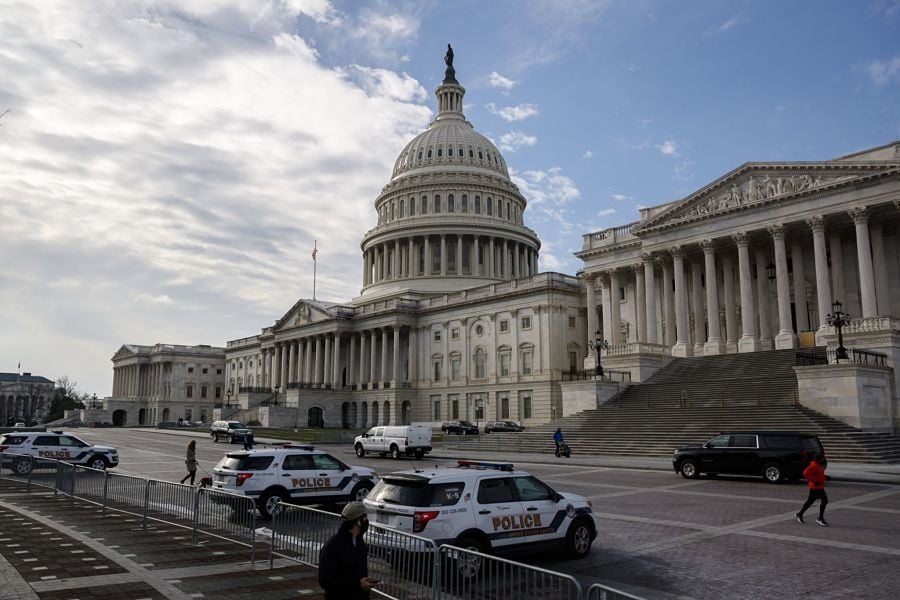

All Americans dream of a secure retirement — whether it’s spending time with grandkids, traveling, or just being able to live with dignity after years of working. Regardless of their specific goals, Americans need financial resources to make it all possible. There is now good news: Congress is working on bipartisan legislation that will help Americans plan and save for retirement, bringing that dream closer to reality.
In the House of Representatives this year, under the leadership of Chairman Richard Neal, D-Mass., and Ranking Member Kevin Brady, R-Texas, the Ways and Means Committee approved the Securing a Strong Retirement Act, also known as SECURE Act 2.0. The legislation builds on the success of the original SECURE Act, which was signed into law in 2019 and included important provisions to expand access to retirement savings plans and improve Americans’ ability to save.
The Investment Company Institute, which represents the global regulated fund industry, supports SECURE Act 2.0 because it contains several commonsense provisions to further help individuals save and invest for their retirement.
First, SECURE 2.0 allows savers to keep their money invested longer by increasing the age at which people must take required minimum distributions from retirement accounts to 75 from 72. This will help Americans — who are living longer than they did decades ago — preserve and have more time to grow their nest egg. Provisions in the bill will also help savers put more money aside in their accounts by increasing the catch-up contribution limit for 401(k) participants ages 62 through 64 to $10,000 from $6,500 — such contributions allow older workers to make additional contributions to their accounts as they near retirement.
Second, the bill ensures Americans get the same bang for their buck over time by indexing the limit on catch-up contributions to individual retirement accounts to inflation.
Third, it broadens the ability of employers of various sizes, across different industries, to band together in a new type of multiple employer retirement plan, called a pooled employer plan or PEP, created by the original SECURE Act. For example, the PEP structure allows owners of a restaurant, a construction company, and an accounting firm to share the cost of offering a 401(k) plan that will help them and all of their employees save for the future. SECURE 2.0 extends the PEP structure to 403(b) plans, which benefits employees of public schools, nonprofits and certain other tax-exempt organizations.
Fourth, the bill helps streamline — and clarify — the information investors receive concerning target-date funds, which are increasingly popular among savers. Current rules require retirement plan administrators to provide performance benchmark information for the plan’s investments that, in the case of target-date funds, often result in irrelevant information and confusion — the opposite of the intent. SECURE 2.0 allows plans to provide a single benchmark for target-date funds that more appropriately tracks the asset allocation of the fund, so participants can make clearer comparisons with alternative investments.
Finally, SECURE 2.0 allows employers to provide matching contributions based on student loan payments. Given the increasing attention on the impact of student loan debt, the bill would allow employers to make matching contributions to defined-contribution retirement plans, such as 401(k)s or 403(b)s, on behalf of employees paying off their student loans. These programs enable workers with limited resources to tackle their student loan debt without completely sacrificing retirement savings.
SECURE Act 2.0 has a bipartisan counterpart in the Senate. Sens. Ben Cardin, D-Md., and Rob Portman, R-Ohio, introduced the Retirement Security and Savings Act, which includes many comparable changes to improve Americans’ ability to save for retirement, such as simplifying disclosures, permitting older workers to save more and stay invested longer, and expanding opportunities for low-wage savers to receive tax credits for contributing to an IRA or savings plan.
Furthermore, Senate Finance Committee Chairman Ron Wyden, D-Ore., and Ranking Member Mike Crapo, R-Idaho, recently held a hearing expressing their intention to move forward in committee on a bipartisan retirement reform package in the coming months. Their work will likely take into account both SECURE Act 2.0 and the Retirement Security and Savings Act.
Congress should quickly take advantage of the momentum to continue modernizing the U.S. retirement system. Thanks to the strong bipartisan leadership at both the House Ways and Means and Senate Finance Committees, Congress is well-positioned to present a unified package of key retirement savings reforms for the president’s signature, which will be a major step in helping Americans achieve their retirement dreams.
Eric J. Pan is president and CEO of the Investment Company Institute, the leading global trade association for mutual funds and other regulated funds.

Rajesh Markan earlier this year pleaded guilty to one count of criminal fraud related to his sale of fake investments to 10 clients totaling $2.9 million.

From building trust to steering through emotions and responding to client challenges, new advisors need human skills to shape the future of the advice industry.

"The outcome is correct, but it's disappointing that FINRA had ample opportunity to investigate the merits of clients' allegations in these claims, including the testimony in the three investor arbitrations with hearings," Jeff Erez, a plaintiff's attorney representing a large portion of the Stifel clients, said.

Chair also praised the passage of stablecoin legislation this week.

Maridea Wealth Management's deal in Chicago, Illinois is its first after securing a strategic investment in April.
Orion's Tom Wilson on delivering coordinated, high-touch service in a world where returns alone no longer set you apart.
Barely a decade old, registered index-linked annuities have quickly surged in popularity, thanks to their unique blend of protection and growth potential—an appealing option for investors looking to chart a steadier course through today's choppy market waters, says Myles Lambert, Brighthouse Financial.
